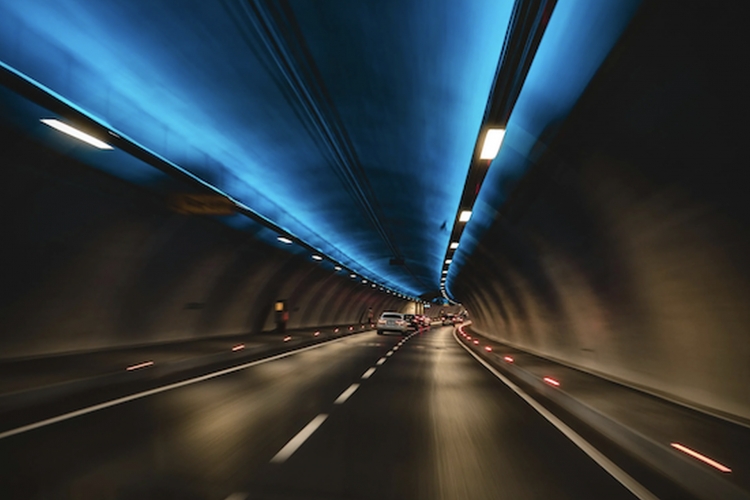Are Polish Road Tunnels Safe?
- Oprac. M.K.
- Kategoria: English zone
The total length of road tunnels in Poland is soon expected to exceed 25 kilometers. But are they adequately protected against fire hazards? While current regulations don’t mandate the latest fire suppression systems, the "Description of Needs and Requirements for Road Tunnels", developed by experts, outlines key principles and best practices. The summer months bring the highest traffic volume, with the tunnel on the S7 “Zakopianka” route seeing as many as 1.5 million vehicles during the holiday season - and over 44,000 on peak days.
Although Poland isn’t among Europe’s leaders in tunnel length, the number of underground road passages continues to grow, shortening travel time and improving comfort. However, this expansion raises safety concerns, especially regarding fire risk. Europe saw increased fire safety efforts following two tragic incidents in the late 1990s: fires in the Mont Blanc Tunnel and Austria’s Tauern Tunnel. Today, multiple safety factors are considered already at the design stage to minimize such risks.
Growing Tunnel Network in Poland
As of early 2025, Poland has seven operational road tunnels, with that number set to rise to 18. Eight tunnels are under construction and three more are in planning, including the record-setting 5-kilometer tunnel under the Oder River. The total combined length of these tunnels will soon exceed 25 km.
The longest tunnel currently in use is located in Warsaw's Ursynów district (2,335 meters), followed by the Bolków–Kamienna Góra tunnel (2,300 meters) and others on major expressways like S7 and S1. In 2025, another tunnel in the Beskid Żywiecki region is expected to open.
Updated Guidelines and Safety Requirements
In July 2023, GDDKiA released the “Description of Needs and Requirements for Road Tunnels”, covering aspects such as ventilation, drilling methods, surface materials, traffic control systems, and fire safety. While current Polish regulations are based on EU Directive 2004/54/EC and domestic legislation from 2000 and 2022, they don’t fully incorporate modern fire suppression technologies.
One such innovation is high-pressure water mist systems, which gained prominence after the Montreal Protocol led to the withdrawal of halon-based extinguishing agents. These systems have been tested extensively under real fire conditions, proving effective even with heat loads up to 200 MW and temperatures over 1,000°C.
Water mist systems remove significant heat during evaporation, reduce oxygen levels locally, and limit radiant heat, minimizing fire spread and re-ignition risk
- says Krzysztof Majcher, fire safety expert at SPIE BTS.
These systems use durable stainless-steel nozzles designed for tunnel environments and offer easy integration with other tunnel infrastructure.
Examples from Across Europe
High-pressure water mist systems are already used in several European tunnels, such as the Mona Lisa tunnel in Linz (850 m), Austria’s Felbertauern (5.3 km) and Arlberg (almost 14 km), the Roertunnel in the Netherlands (2.45 km), and the Heathrow Main Tunnel in the UK (2.5 km).
Current Safety Measures in Polish Tunnels
Modern Polish tunnels include early fire detection, fire extinguishers every 125 meters, hydrants, rescue niches, and emergency cross-passages every 250 meters. They also feature emergency lighting, reversible smoke-control ventilation, voice/text information systems, and radio communication.
The new S3 Bolków-Kamienna Góra tunnel exemplifies these standards - it’s both the longest and most advanced extra-urban tunnel in Poland.
Rising safety standards demand top-tier fire suppression systems. Water mist systems are especially suited for high-priority areas where life safety and asset protection are critical
- says Majcher.
When Can Drivers Be Asked to Leave a Tunnel?
During summer, tunnel traffic peaks. On the S7 tunnel under Luboń Mały, the average daily traffic reached 26,400 vehicles in late June 2024, peaking at 44,217 on August 11. Over seven summer weeks, nearly 1.5 million vehicles passed through. Despite strong safety systems, drivers must follow essential rules. Tunnel evacuation may be required in case of fire, accidents, hazardous material spills, equipment failure, rescue operations, or terror threats. Warnings must be obeyed immediately - drivers should exit at the nearest point, never turn around or stop unless necessary, and head on foot to emergency exits if needed.
Ignoring warnings before entering a tunnel is also prohibited, as alerts are integrated with tunnel systems and triggered automatically. Disregarding them is not only illegal - it can be life-threatening.
Source: Brandscope / GDDKiA


